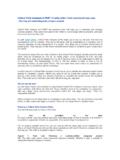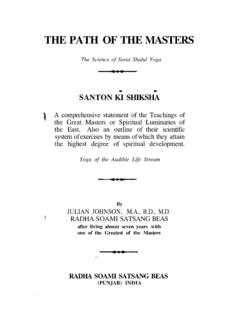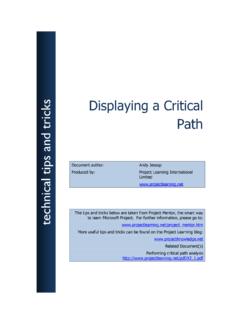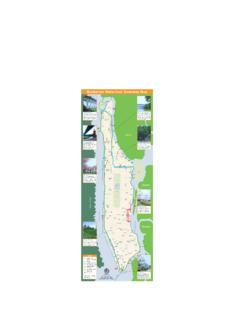Transcription of …a direct path to firing solutions. - Mildot
1 Mildot Master (Pat. Nos. 5960576, 6196455) ..a direct path to firing solutions . Table of Contents I. Introduction II. Instructions A. Estimating Target Size Target Estimation Nearby References B. Determining Range to Target C. Correcting for Bullet Drop Drop Data Importance of Verification Conversion to Mil (holdover) Conversion to MOA (sight adjustment) III. Additional Information A. Correcting for Wind Drift B. Correcting for Uphill/Downhill Shots Bullet Drop Compensator Range Compensation Importance of Verification C. Metric Conversion D. Summary IV.
2 Practice Examples A. Determining Range B. Correcting for Uphill/Downhill Shots C. Correcting for Bullet Drop D. Converting Correction to Mil (holdover) E. Converting Correction to MOA (sight adjustment) V. Answers to Practice Examples Appendix I: Sub-mil Measurements Appendix II: Ballistic Data Strips Mildot Enterprises Box 1535 Los Lunas, NM 87031 Copyright 1998, 2000 Bruce N. Robinson All Rights Reserved Mildot Master and ..a direct path to firing solutions are trademarks registered to Mildot Enterprises. (Rev. 13 June 2001) Mildot Master Section I Introduction Situation: The Mildot reticle is in increasingly widespread use among long-range rifle shooters as a means of estimating the range to the target.
3 This estimation is critical in order to correct for the varying degree of projectile drop (and/or wind drift) at different ranges and thereby enable the shooter to hit the target. With training and familiarization, an experienced marksman can accurately estimate range to target by using this type of reticle and by making the appropriate calculations. Originally fitted to telescopic sights designed for military (and later police) use, the Mildot reticle has seen growing acceptance in the civilian sector among target shooters and hunters. Principle: By using a set of fixed references within the telescopic sight, the shooter can compare the size of a target, a portion of the target, or a nearby reference target to a series of precisely sized dots and spaces.
4 These dots are placed at a constant 1 mil (36 @ 1000 yds. or 1 meter @ 1000 meters) center-to-center spacing. By estimating the size of the target or reference and noting the number of mils that equal the size of the target, the shooter can determine the range to target by applying a formula (Size of target in yards multiplied by 1000, divided by Size of target in mils, equals Range in yards), usually by employing a conventional hand-held electronic calculator. Problems: A series of difficulties arises in the effective use of this system: The necessary calculations are somewhat complex and depend upon the shooter s ability to remember and correctly apply the formula.
5 The size of the target is more often than not mentally estimated in inches, necessitating an additional calculation to convert the target size into a decimal equivalent of yards. If the range is to be calculated in meters, an additional conversion from yards to meters is necessary. Even after the shooter has gone through the range calculation procedure, the amount of bullet drop (or wind drift) applicable to that range must now be applied to the sight picture to enable a hit on the target. Either the telescopic sight must be adjusted or the sighting point held over , which necessitates a second series of calculations to translate the needed amount of correction into a sight adjustment or hold-over figure for that range and load.
6 Aside from the possibility of errors occurring during these calculations, the time involved in such calculations can prove problematic in certain scenarios, such as military or police counter-sniping operations, timed competitive target-shooting events, or hunting situations. Solution: Eliminate the need for multiple data entry steps and simplify the calculations by the use of an analog calculator designed expressly for this purpose. Description of Device: The Mildot Master is an analog calculator designed along the principle of a slide rule, utilizing logarithmic and inverse logarithmic scales developed specifically for performing the following operations: Rapid and simple calculation of range to target, based on a measurement of the target with a Mildot reticle, by aligning the estimated target size directly opposite the Mildot measurement, and then reading the range at an index mark.
7 Rapid and simple calculation of the amount of sight correction necessary to compensate for bullet drop and/or wind drift for a given range, enabling the shooter to determine either the equivalent telescopic sight adjustment (minute-of-angle, or MOA) or the equivalent hold-over (mils), by reading equivalents in both MOA and mils directly opposite the bullet drop/wind drift figure. Additionally, angle of fire for uphill or downhill shots can be accurately measured, and the up/down compensation can be closely calculated to reduce the errors such shots can induce. Front Rear Notes: The portion of the Mildot reticle represented on the front of the Mildot Master is for illustration only and is not to scale.
8 The scale on the rear of the Mildot Master is for conversion of inches to centimeters and centimeters to inches, and is not to scale. Advantages: The Mildot Master exhibits numerous advantages over the use of a conventional handheld electronic calculator, such as: No conversion of estimated target size from inches into decimal equivalent of yards is necessary, as the Target Size Scale is in increments of feet and inches. No entry of data or operations through a keypad is necessary, as the device is purely analog and only requires the alignment of figures on scales. No memorization of formulae is necessary, as the correct formulae are built into the scales.
9 No complex calculations for determination of telescopic sight adjustment or hold-over at various ranges are necessary, as the scales of the device convert drop/drift figures directly into both MOA and mils. No separate data sheet is necessary for bullet drop figures, as the reverse side of the device is designed to accommodate either commercially available data decals or user-produced data strips. Speed of calculations necessary to determine range to target and required telescopic sight adjustment and/or hold-over can be significantly reduced by using this device in lieu of a conventional hand-held electronic calculator. The Mildot Master is comprised of only two parts and utilizes no electrical or electronic parts.
10 It needs no batteries, and its simplicity of construction and operation results in extreme reliability under adverse conditions. Unlike an electronic calculator, the Mildot Master can measure the angle of a shot (up to 60 above or below the horizontal), and can be used to correct for the effects of uphill/downhill shooting. Section II Instructions Estimating Target Size: Target Size Estimation is the single most critical factor in the process of range estimation and the subsequent determination of aiming corrections. It is essential that the shooter become proficient in accurately estimating the size of various target objects and of reference objects. This can only be accomplished through practice!








